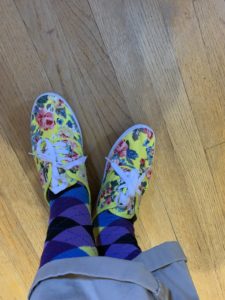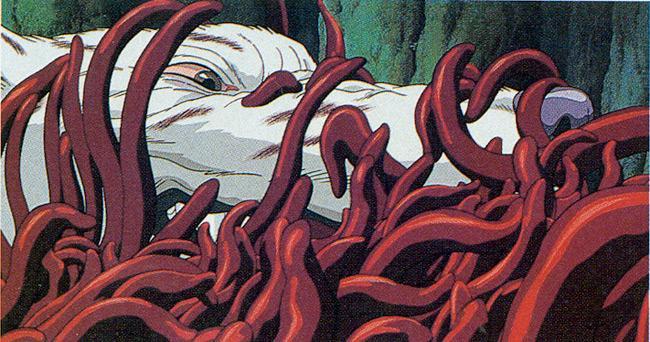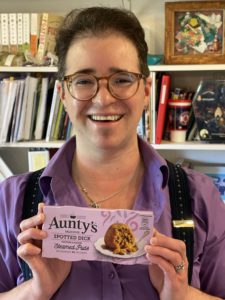Happy April Fool’s Day to the readers of this increasingly sporadic blog. I pranked my son this morning by telling him that the Nutella company was going out of business. We both love to eat this sugary spread for breakfast (him without benefit of spoon). Never fear, the nut supply is still abundant.
For genuine everyday horror, I’ve just finished reading Robert Marasco’s 1973 haunted house novel, Burnt Offerings, reissued by Valancourt Books. This book is like what would happen if a “Better Homes and Gardens” magazine became sentient and started eating your brain. Our protagonists flee the grime and noise pollution of low-income apartment life in New York (something I know well!) only to be seduced by the luxuries of an upstate mansion that consumes tenants’ life force in order to repair itself. Unlike typical haunted houses, this one is delightful to live in. The horror arises from watching the lengths to which people will go to delude themselves because they want a room with a view.
That this impulse remains strong, especially when New York real estate is involved, is documented by Morgan Boyle’s essay at Fence Digital, “Imaginary Liminality Steps From the Train: How to Dreamwalk the World of Craigslist Apartments”.
Occasionally the ceilings are high, the rent is cheap, the deli is two doors down, the kitchen is large and there’s no sink in the bathroom. The listing says the apartment is unique. The apartment is unique. The kitchen is big black and white tile and good to dream about. You think about never washing your hands after using the toilet. You think about never washing your face at night. You think about brushing your teeth over the kitchen sink. The living bodied broker waits expectantly, digitally behind a computer screen. The listing says it is unique. Are you unique enough for this apartment? What’s a bathroom sink? You think about a potential lover standing in the bathroom looking expectantly for a sink that isn’t there. You think about the moment the realization of the lack dawns. You think about the look they give you upon exiting the bathroom with the missing sink and their unclean hands. You think about the unspoken shared knowledge of filth between you. You stop daydreaming in the apartment and click to the next listing. There is not a lot of room for this type of uniqueness in a pandemic world.
The Guardian’s Meg Conley takes a deep dive into the history of kitchen design and social class in this October 2021 article, “Invisible fridges and cooling cubbies: how kitchens have been designed for the rich”. Since the labor of home management historically fell to lower-status groups–women, and particularly Black women in white households–it was important to conceal it because oppression is such a downer when you’re throwing a dinner party. Rather depressing to learn that in 1908, Charlotte Perkins Gilman, author of the classic feminist tale “The Yellow Wallpaper”, proposed liberating white women from household duties by creating a forced labor corps of Black men, women, and children!
Along those lines, the ever-astute Brandon Taylor suggests in his Sweater Weather newsletter that costume dramas like “Bridgerton” or “The Gilded Age” can never adequately represent historical injustices such as racism, because we watch them to enjoy the pretty stuff and the rich people behaving badly, but where do you think that wealth came from?
American period dramas are exercises in self-delusion, always evading the twin horrors of colonization and enslavement. The reason is simple: the history as it happened is too horrifying to turn into a rosy bourgeois narrative. There are no good guys to root for. No way of affirming Protestant sexual and social values in a way that flatters contemporary audiences. That’s why every period drama is ultimately a confection. Because to tell the truth how it really was, how it truly was, would be too much. Implicating.
Don’t miss Taylor’s searing short story “Urgent, Necessary, Vital” at Esquire. A college pottery class becomes a microcosm of sexual and racial politics, as a Black photography student finds that artistic success doesn’t insulate him from being othered, merely gives the problem a different form.
Glennon Doyle’s podcast “We Can Do Hard Things” last month interviewed trans activist and mixed media artist Alok Vaid-Menon about breaking free “from every socially constructed binary that does not allow us to live out our full humanity, our divinity, our infinite creativity and possibility.” Listen or read the transcript here. Alok says:
I see so much of what the trans movement being in the world is a love letter that says, I believe in your capacity for transformation, I believe in your capacity for self-determination. And then in response to that love, we’re told that we are wrong, that we’re disorderly, that we’re foolish, that we’re ridiculous, that we’re delinquents, that we’re predators, that we’re violent. That’s a pain that I continue to face as my words reach more people, is this extreme and coordinated backlash to tarnish me and by extension tarnish the ideas that have been here, they’re ancient ideas, because I think what patriarchy does is it makes us publicists. We find ourselves speaking it, doing it, living it, thinking it with such a fierce allegiance that if someone dare say another way of living is possible, people would rather eradicate and extinguish that alternative than confront that kind of spiritual nudity of asking, who am I outside of what patriarchy wants me to be?
I love their reframing of beauty standards: “Beauty is looking like ourselves.”
Devon Price’s Medium article “The Power of Defiance in the Age of Trans Bans” expresses an understandable exhaustion with the political process. How many times do we have to convince voters and politicians that we deserve to exist?
As a Millennial…I still received the message that being gay was strange and disgusting, and being trans was freakish and deluded. To be both gay and trans was too bizarre to even consider. Anti-gay laws convinced me I was an impossible, dangerous thing. Children and families needed protection from even the idea of me.
Believing all that about myself was absolutely shattering. It ruined my physical and mental health, and for many years destroyed my ability to love others. This is exactly the fate states like Iowa, Texas, and Florida are currently setting trans kids up for. The many political victories gay people have won in recent years have done nothing to prevent this. It was always conditional acceptance, as easily taken away as it was given.
But our autonomy and dignity should not belong to others like this. It should only ever belong to us.
I am not here to write inspiring calls to political action. I’m not interested in begging people to call their representatives or get to the polls. I don’t want to waste anyone’s energy or hope like that anymore. I no longer believe there is any liberation to be found within a legal system that has already tried, many times, to legislate entire groups of people out of existence. I think our power as trans people will not be attained through conventional political channels, but by standing together in proud disobedience of the laws that attempt to control our identities and bodies. I think our committed cis allies must be ready to disobey unjust laws too.
If your professional life is touched by these anti-trans laws, I believe you have a moral obligation to break them. If you’re a teacher, doctor, therapist, or school psychologist in Texas, you must be willing to protect transgender kids and their families. If it proves necessary, refuse to report trans kids’ existence to the government. Disrupt and thwart your colleagues’ attempts to report trans families, too. Lose documents. Slow down processes. Lie. Find any methods you can to grind this dehumanizing machine to a halt.
If you’re a healthcare provider in Iowa, find surreptitious ways to deliver care to your trans patients. Help trans families find the resources they need, and build networks with your colleagues in other states, to keep trans kids treated and safe. If you’re a school teacher in Florida, protect your gay and trans students from harassment, and quietly provide information that will help them understand themselves. If you are a parent or educator anywhere in the country, be on alert for transphobic, homophobic policies and undercut them at every possible turn. Every unjust rule is an opportunity to break it. You have so more power than you realize — and far more options than our political system would like you to see.




